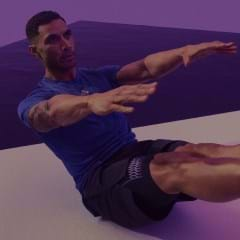It’s easy to feel virtuous after working out, but it won’t save you from the modern disease of sitting down too much. Smashing yourself at the gym for an hour, then spending the rest of the day stuck in front of your computer or slumped in your favorite armchair watching television, is like being a marathon runner who smokes. And just like smoking, sedentary behavior is bad for you, regardless of how much you exercise.
What’s the issue with sitting?
The issue has come under sharper focus in recent years, with research showing too much time spent on our behinds is linked to cardiovascular disease, cancer risk, diabetes, hypertension, osteoporosis, depression and early death.
The problems are rooted in the fact that when we sit for long periods we don’t contract our large skeletal muscles – and this can impact the body’s metabolism. An absence of muscular activity for most of the day can result in reduced efficiency of blood glucose uptake, changes to blood fat uptake, blood pressure shifts, and changes to other physiological processes.
How much exercise is needed to eliminate the sedentary risk?
This is what a team of scientists from Australia have been exploring. They’ve developed a new way of calculating the balance between physical activity and sitting time (it’s called the PASTBI Index, which stands for Physical Activity and Sitting Time Balance Index). After studying almost 6,000 individuals, this index highlighted the risk of all-cause mortality was 47% higher amongst those who move less and sit more. While increased exercise duration and decreased sedentary time resulted in reduced mortality risk, there was no evidence that a specific amount of exercise can undo the issues associated with sitting.
An earlier study explored the screentime habits of adults who achieved the recommended hours of weekly exercise. They found that despite the regular bouts of exercise, time spent in front of the TV still increased cardiometabolic risk factors such as waist circumference, blood pressure and glucose levels. Further to this, a more recent study found that people who participate in more than seven hours of moderate to vigorous exercise per week BUT also watch a significant amount of TV per day had twice the risk of cardiovascular mortality as those who do the same amount of exercise but only watch one hour of TV per day.
So the message is pretty clear, exercise – yes absolutely – but don’t think that grants you unlimited access to the couch.

Think about the numbers – and take action
An intense 60-minute gym session might feel like a lot. But no matter how hard you go, it doesn't stack up when considering one hour is only 4% of your day. There are another 1390 minutes of the day that can either work for you or against you depending on how you choose to use them.
We’ve manipulated our environment and made modern lifestyles so comfortable that we rarely need to exert any effort to function in our daily lives. Experts advise that we should choose to be active whenever we get the chance.
This means:
- Choosing the stairs over the elevator
- Walking to the shops rather than driving
- Switching between seated work and standing work – using a sit/stand desk makes this easy
- Breaking your day up with a quick stroll around the block
“I’m always shocked to see people I work with take the lift instead of the stairs because they think they get enough activity due to regular appearances at the gym. That’s like being a weightlifter who gets the hotel porter to lift his luggage!”
How to maximize your chill time
While we know replacing sedentary time with physical activity is a good thing, this research also suggests that replacing sedentary time with sleep (arguably the most sedentary type of activity possible) is beneficial. The researchers found those who substituted 30 minutes of sedentary time a day with sleep had a lower body mass index (which is linked to favorable cardiovascular health and lower risk factors for cardiovascular disease).
So, if you’re going to spend time being sedentary, this research suggests you should go all in and grab some sleep. Nodding off on the sofa could actually be the healthier option than staying awake staring at the TV.
Bryce Hastings is a leading New Zealand physiotherapist and fitness expert. As Les Mills Head of Research he leads research into the most effective approaches to exercise and plays a pivotal role in structuring all LES MILLS™ workouts. Bryce’s passion for effective exercise is born from spending 30 years in physiotherapy, where he saw “people getting their lives wrong” every day and felt like he was acting as an ambulance at the bottom of the cliff. By working in fitness he gets to be the fence at the top.








